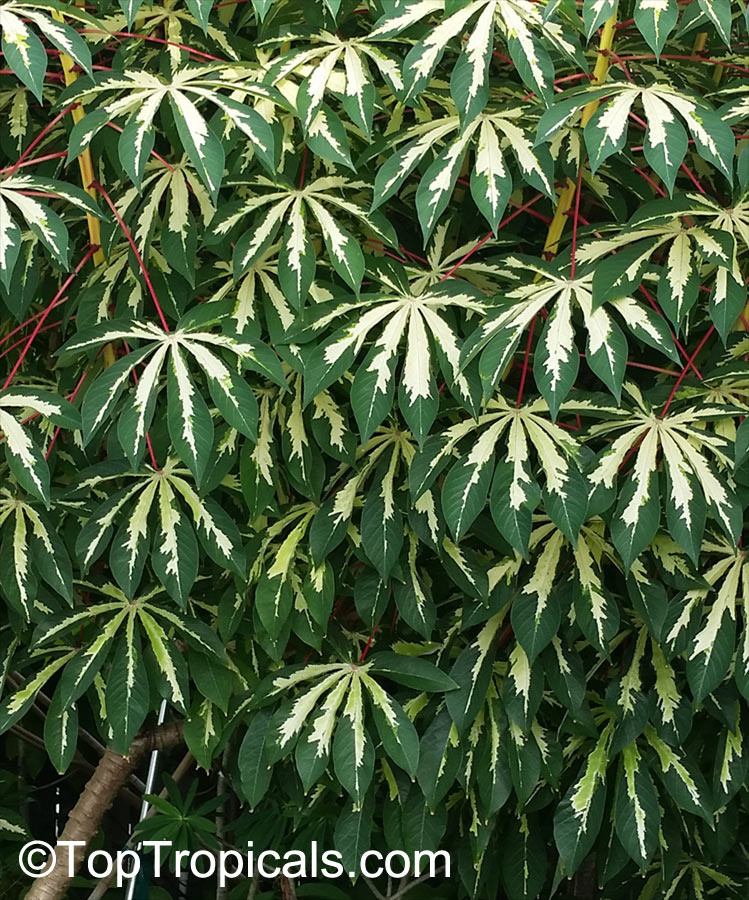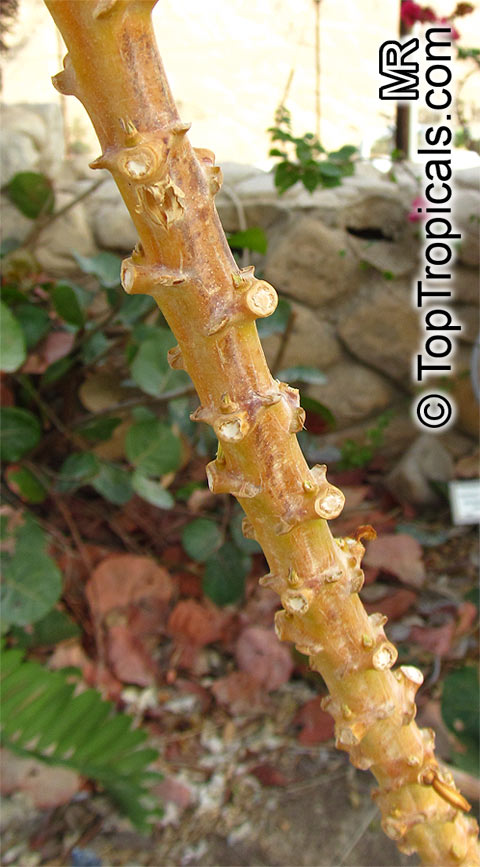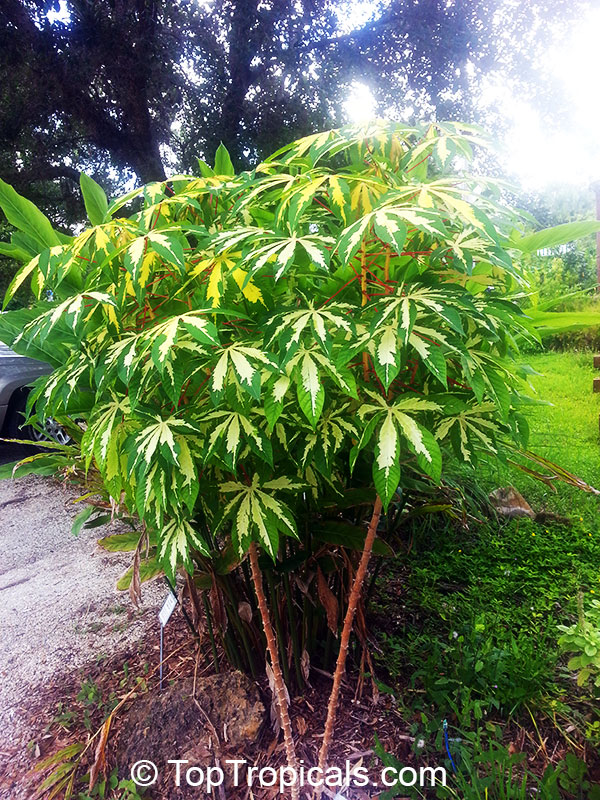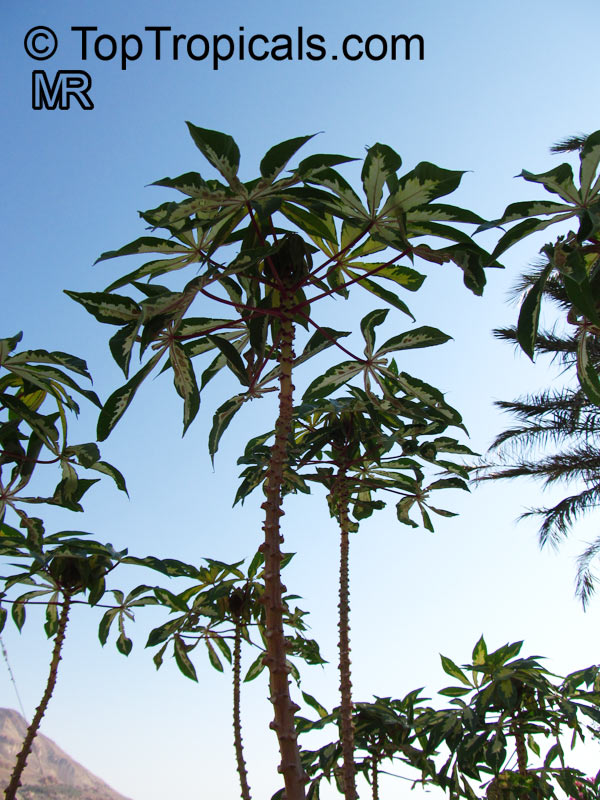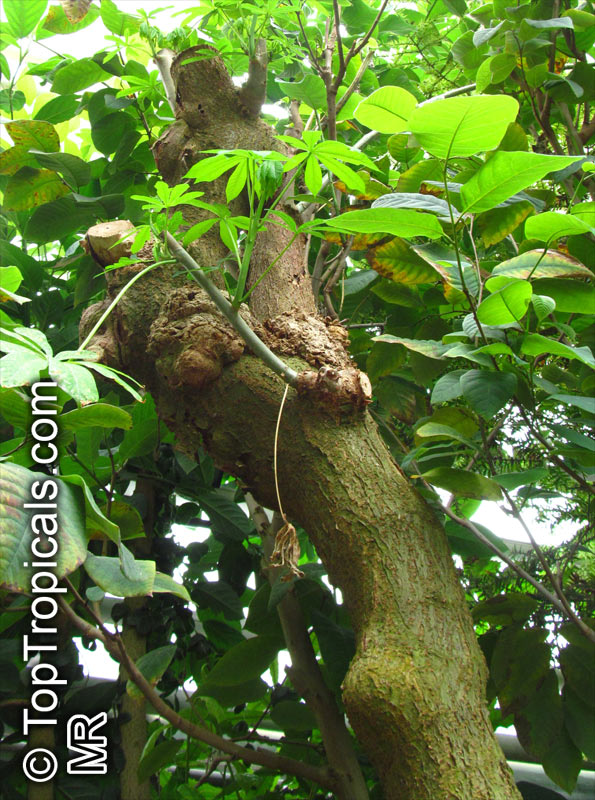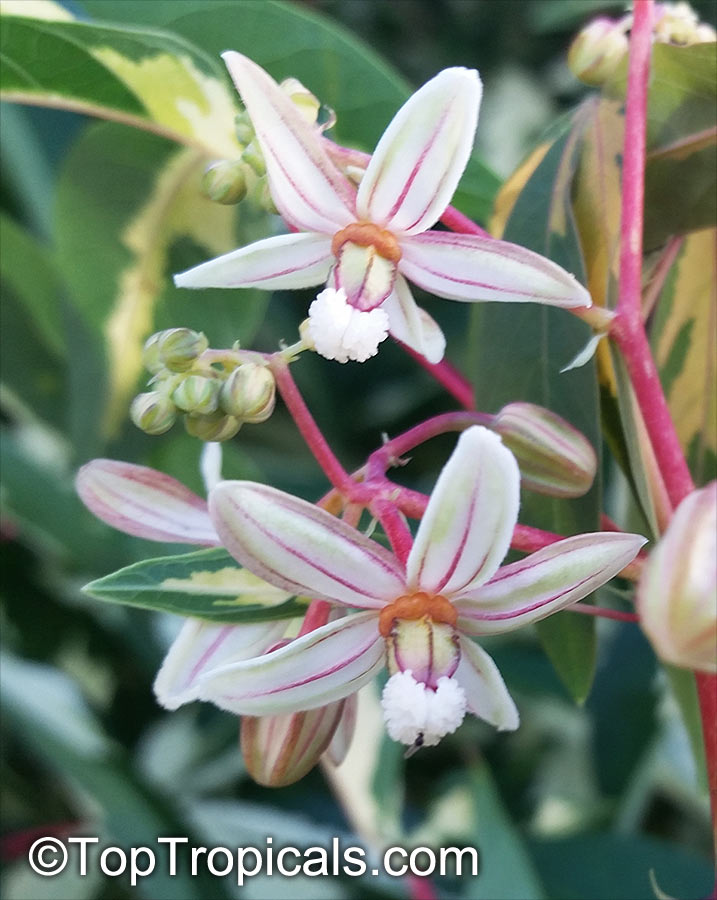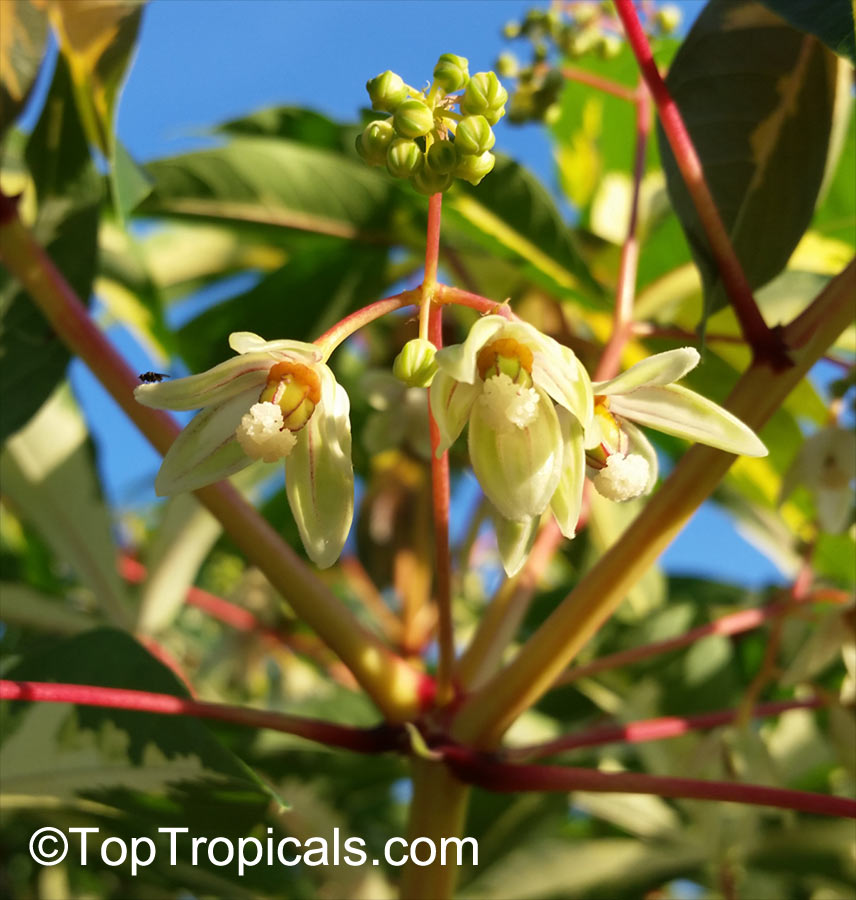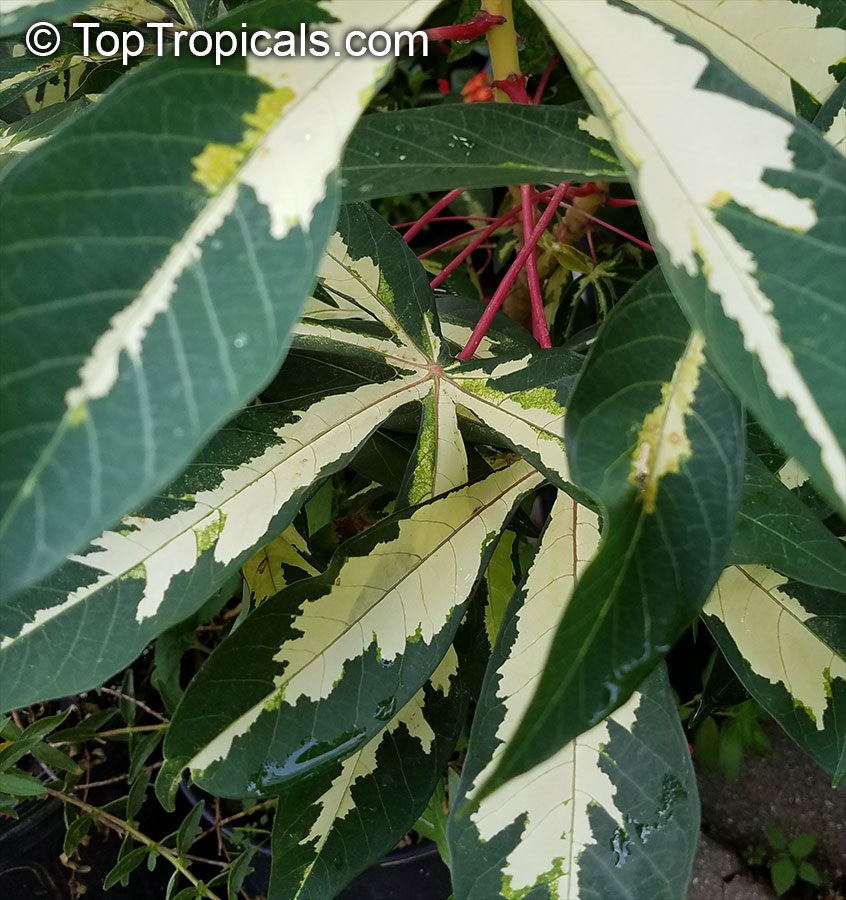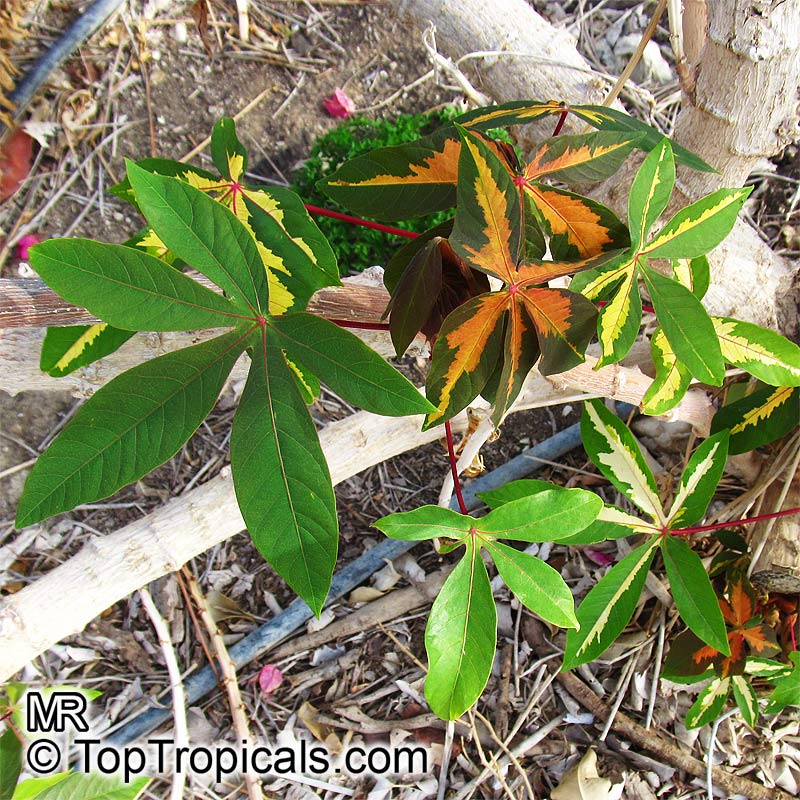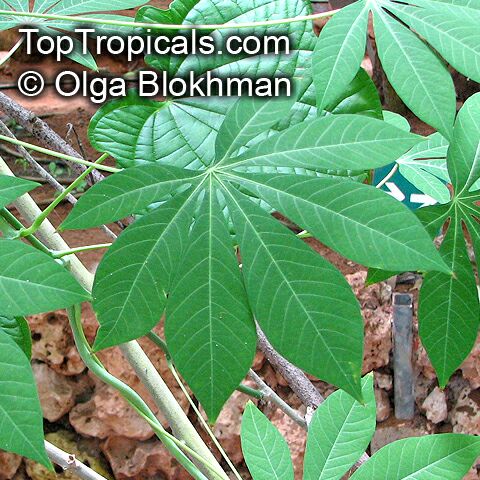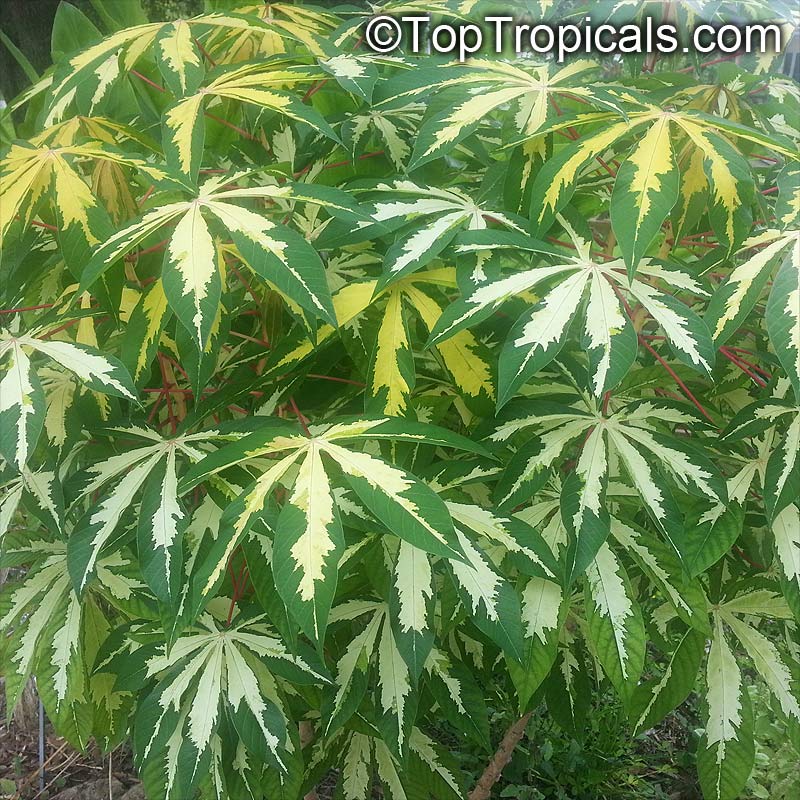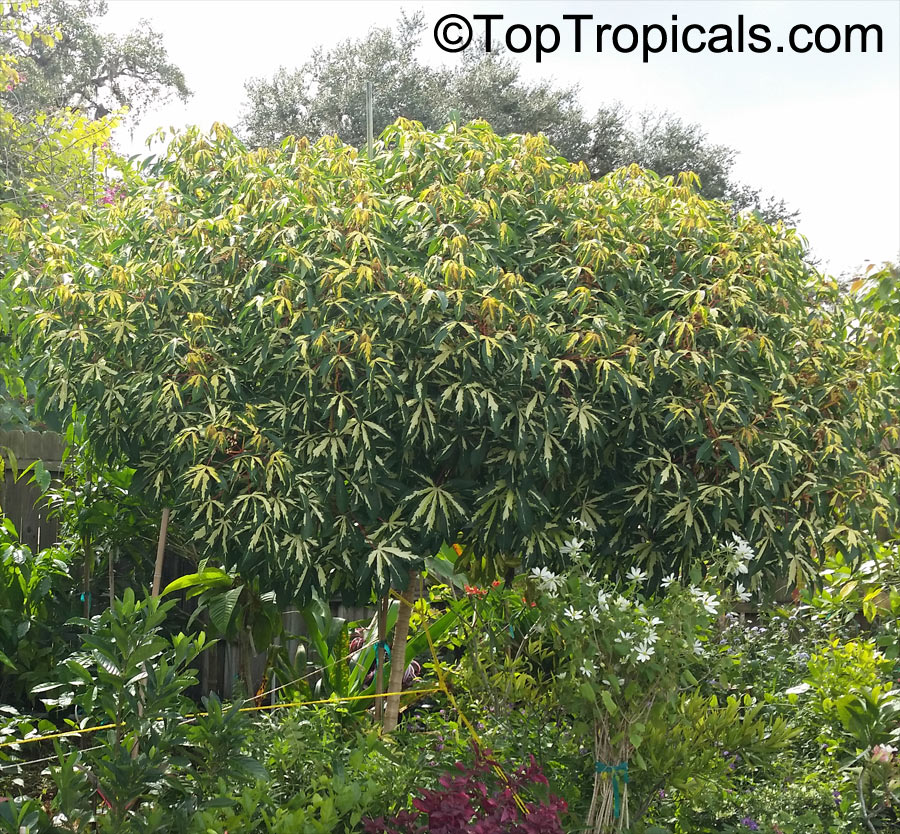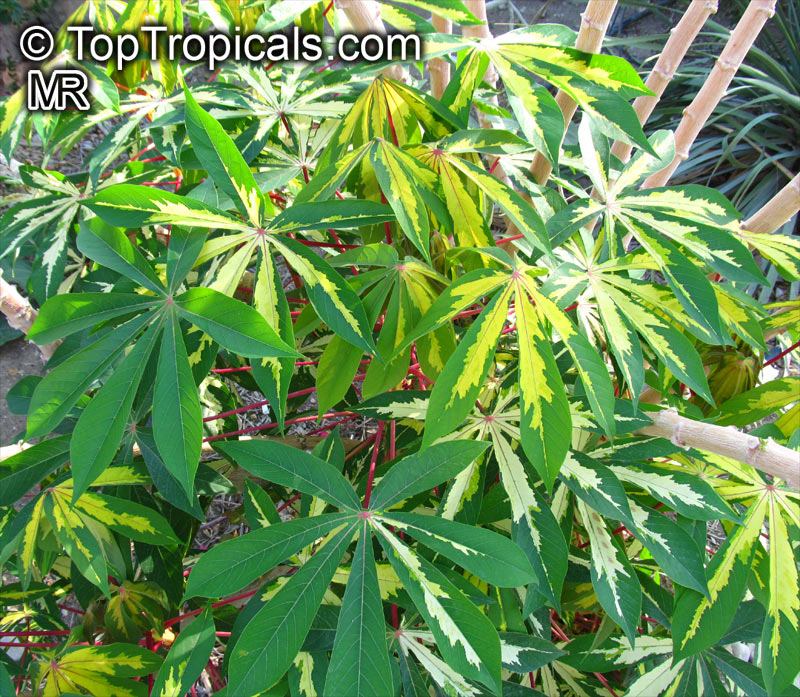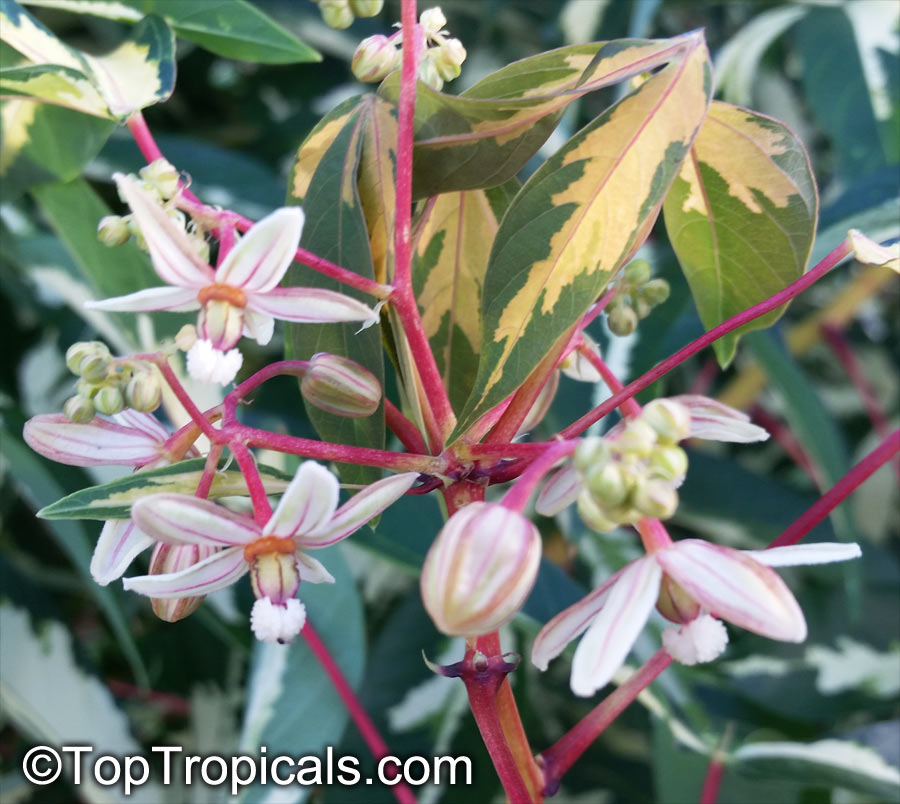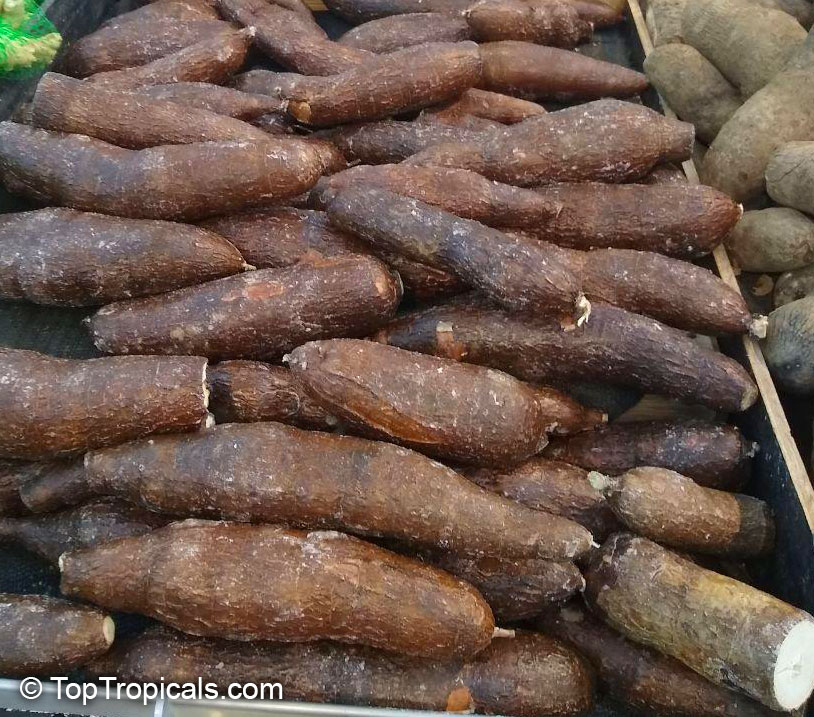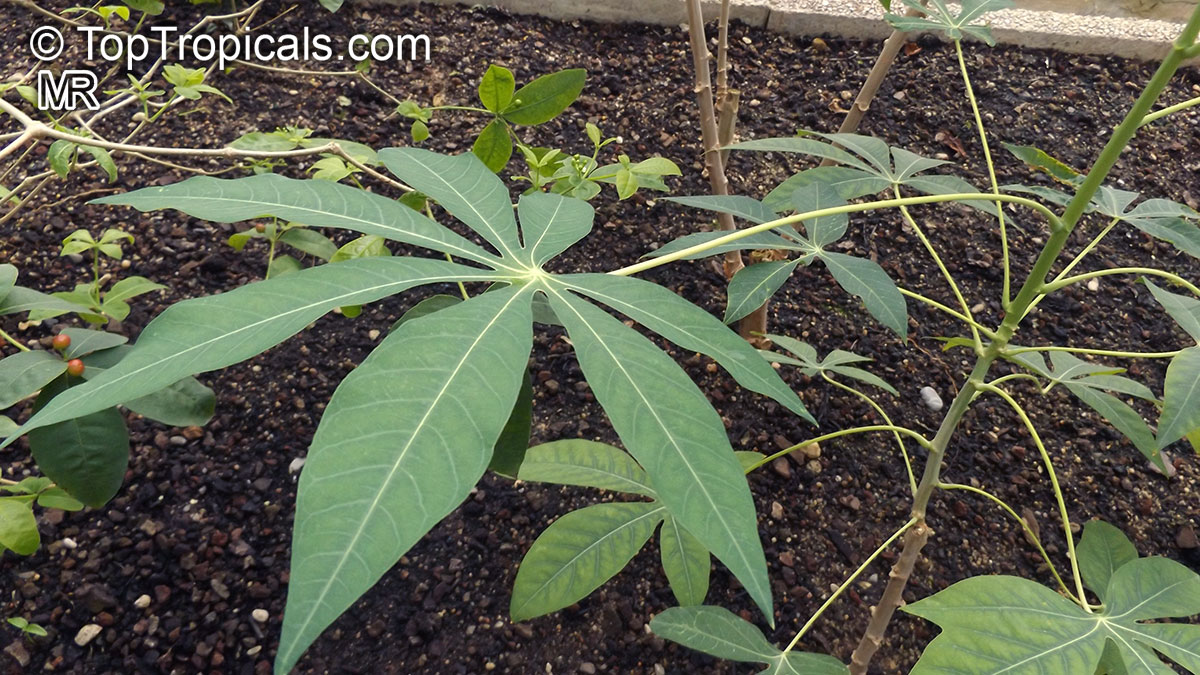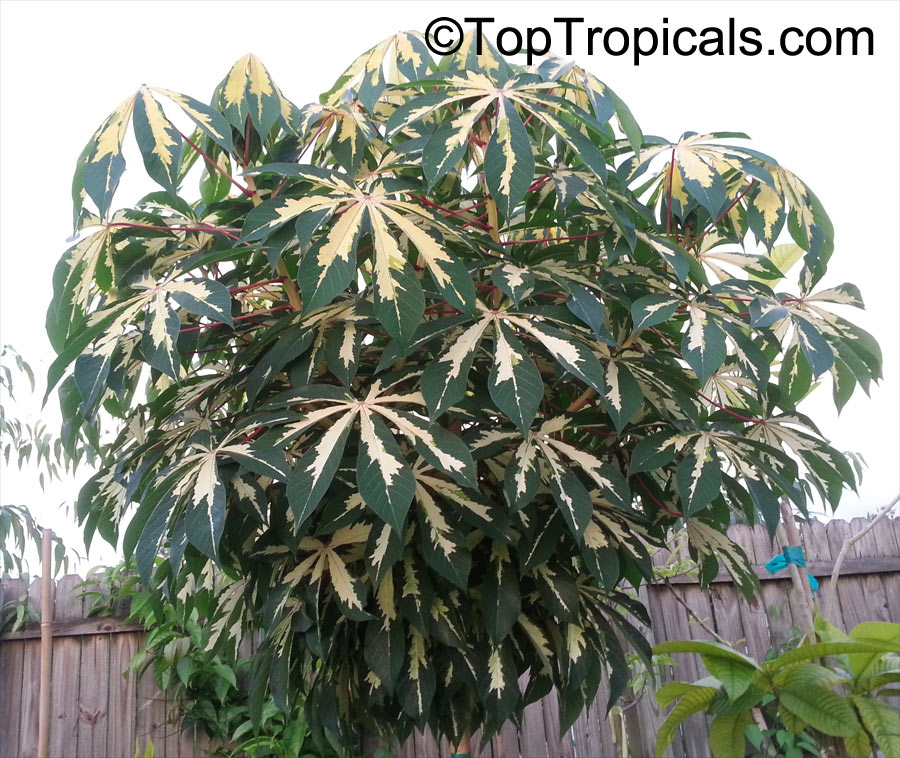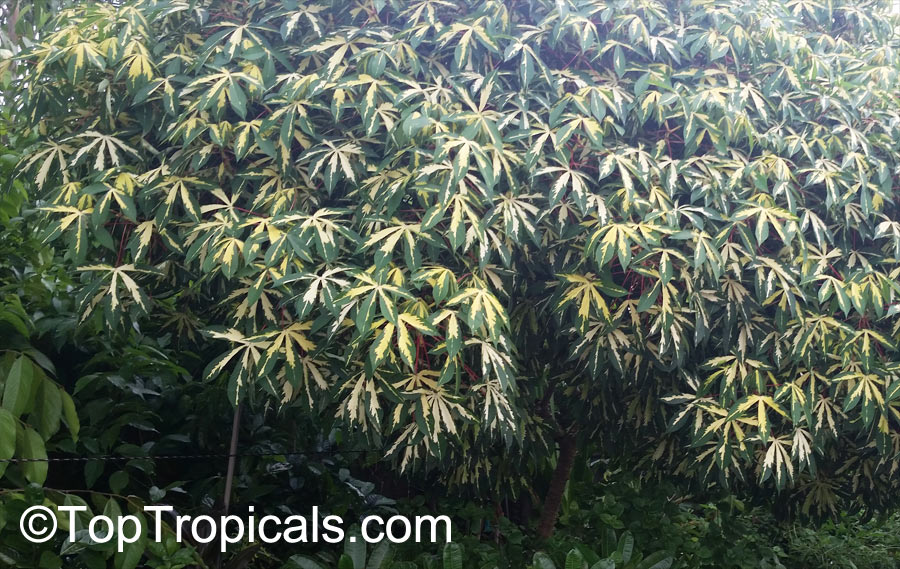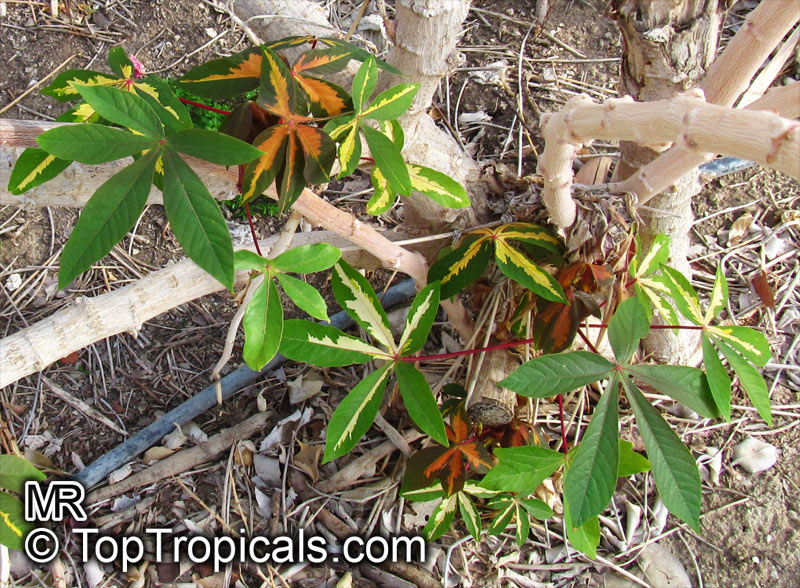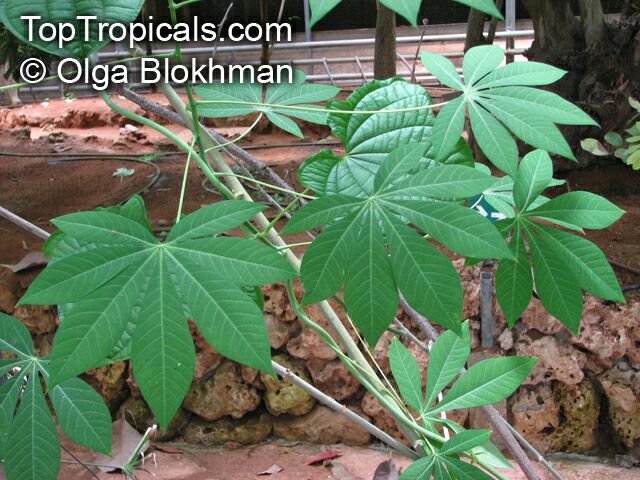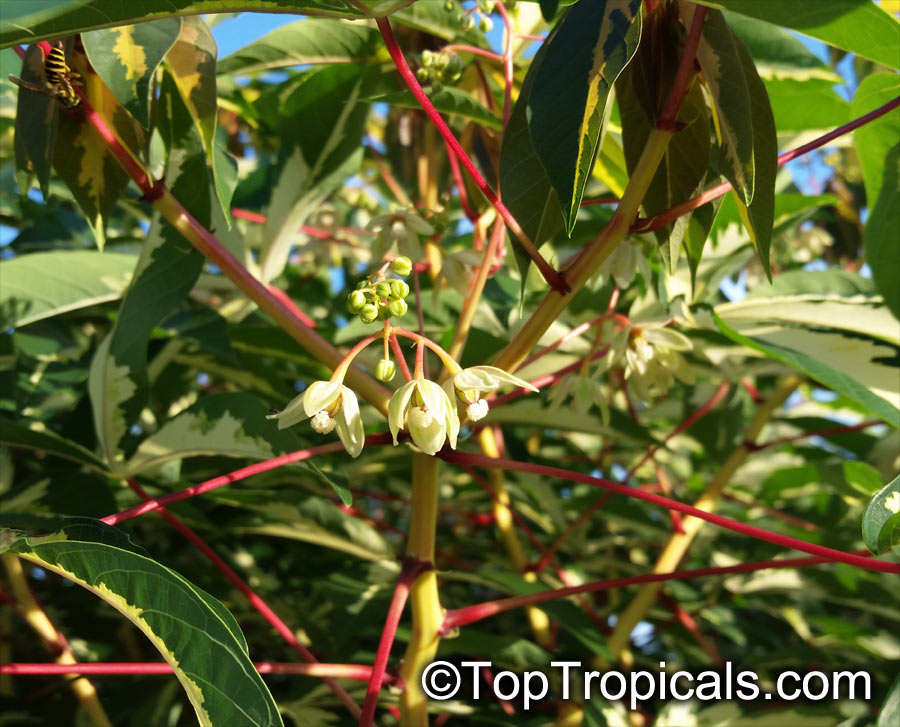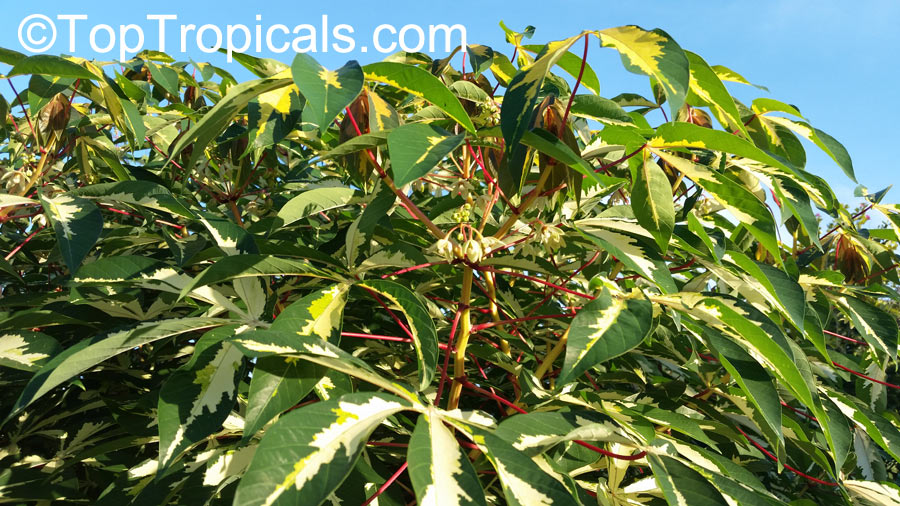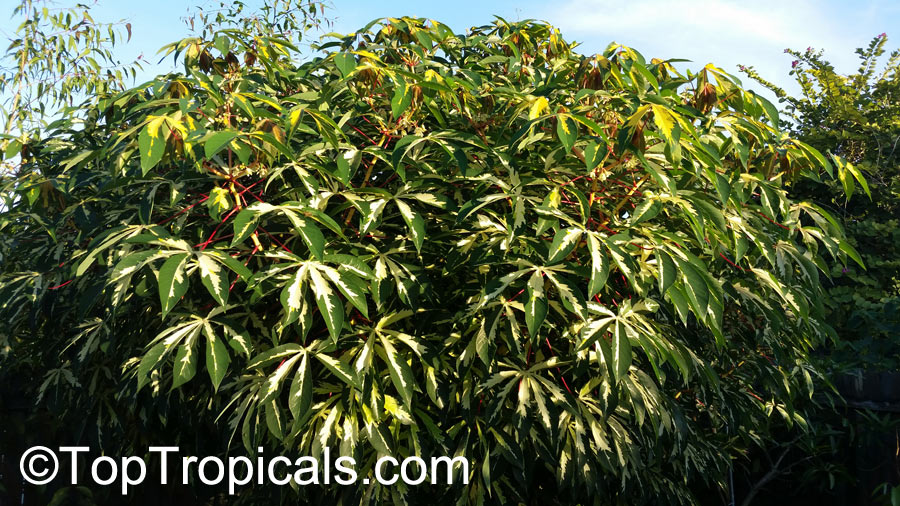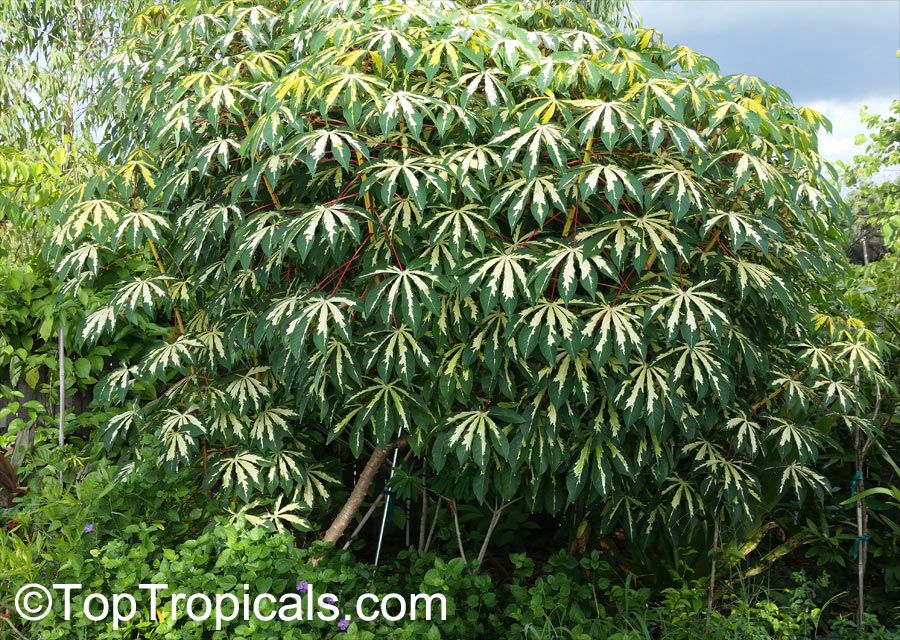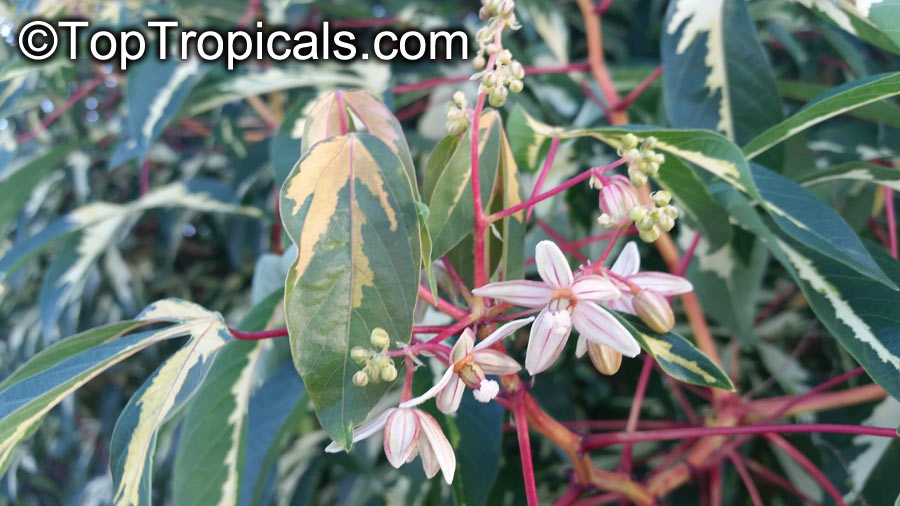Manihot esculenta (Cassava)
Top Tropicals Plant Encyclopedia
Botanical name: Manihot esculenta
Common names: Cassava, Manihot, Tapioca, Manioc
Family: Euphorbiaceae
Origin: South America











The Manihot esculenta, commonly known as Cassava, is a large shrub that can grow 5-10 feet tall when fully mature. It is a hardy plant and can tolerate full sun or semi-shade, and only needs a moderate amount of water. It is known for its beautiful pink and white flowers, as well as its ornamental foliage. This plant is native to South America, and is grown in USDA Zones 9-11.
This plant has both ethnomedical and edible properties. Cassava roots, peels and leaves should not be consumed raw The tuberous root is edible. It is processed by first peeling the root, being sure to remove all of the purple outer layer, and then boiling in at least one change of water. The processed edible root can be used in a variety of dishes. It is also high in essential vitamins and minerals. The plant itself is poisonous and should be handled with caution.
In regions with cold climates, Cassava can be grown in a pot. It needs to be planted in a well-drained, sandy soil mix and should be watered regularly. The pot should also be placed in a warm and sunny area, in order to ensure proper growth.
Read more:
Similar plants: Manihot esculenta (Cassava)
Recommended Fertilizer: SUNSHINE Megaflor - Bloom Nutrition Booster
Recommended Fertilizer: SUNSHINE Megaflor - Bloom Nutrition Booster
